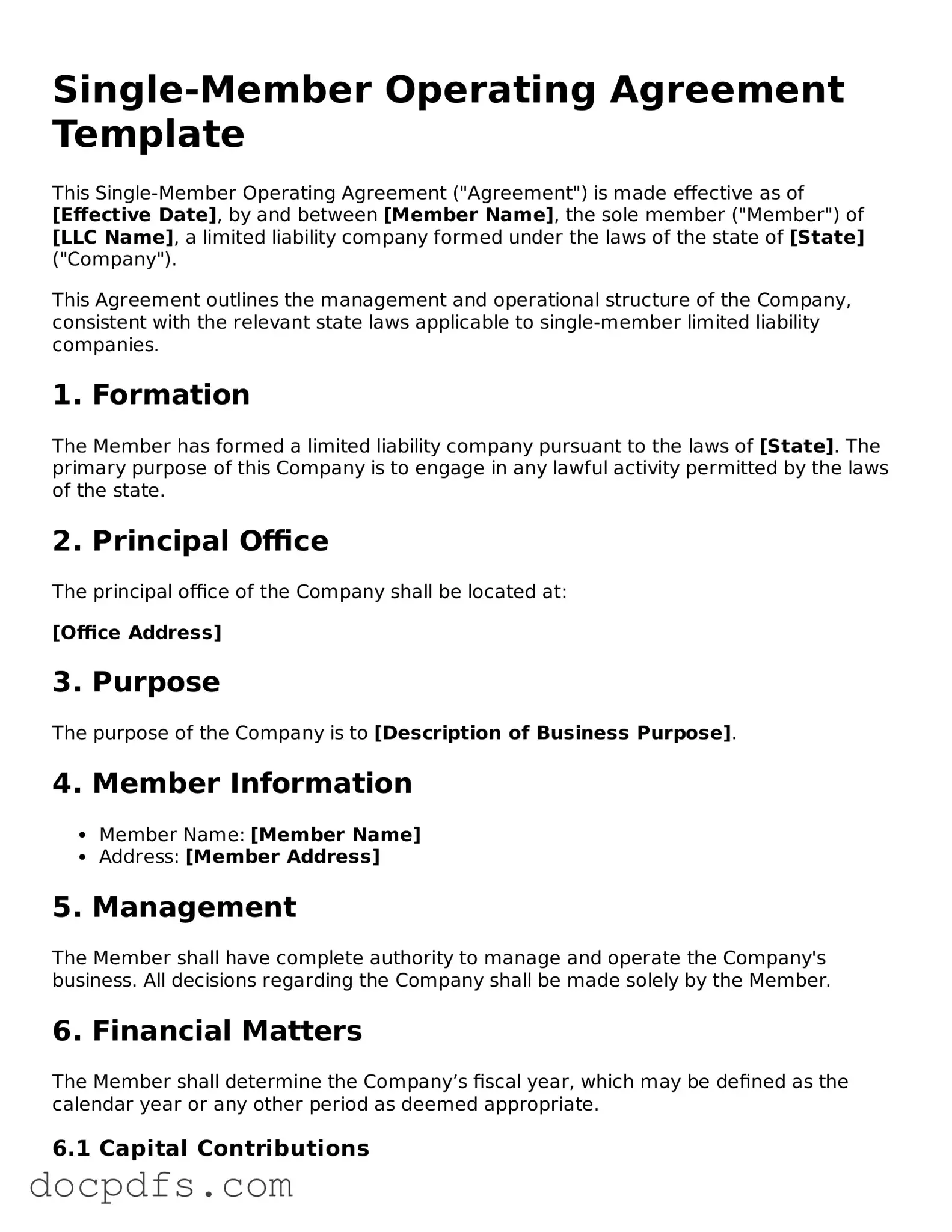Legal Single-Member Operating Agreement Document
A Single-Member Operating Agreement is a legal document that outlines the management structure and operational procedures for a single-member limited liability company (LLC). This agreement serves as a crucial tool for defining the owner’s rights and responsibilities, ensuring clarity in business operations. By formalizing the relationship between the owner and the LLC, this document helps protect personal assets and establish a solid foundation for the business.
Open Single-Member Operating Agreement Editor Now
